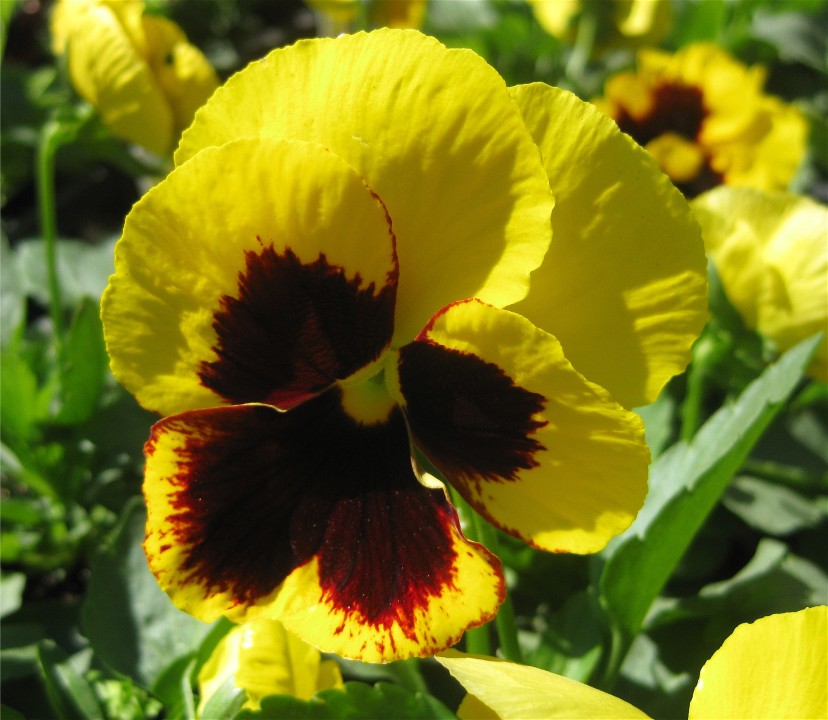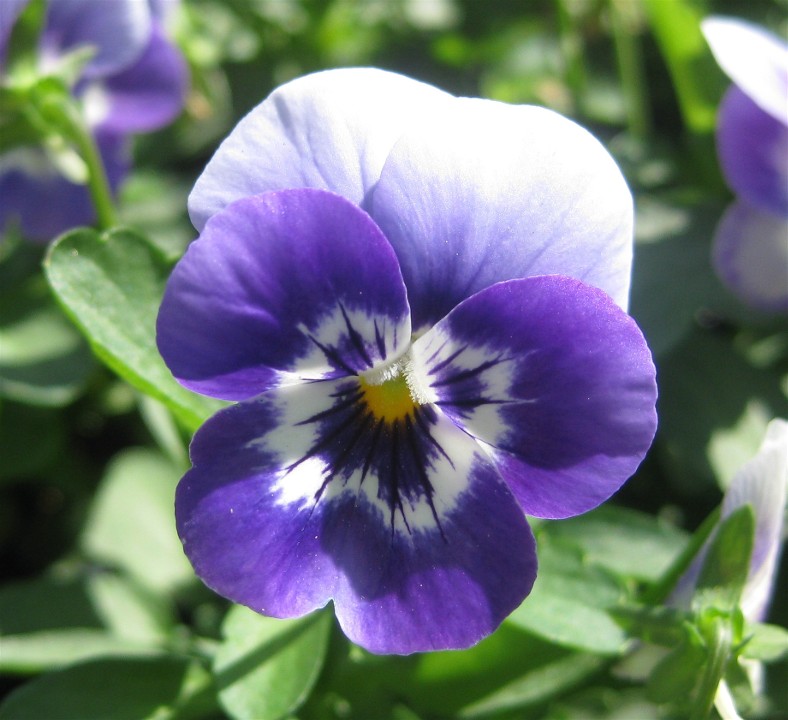PLANTING PANSIES
- Choose an area that receives at least six hours of sun per day. Till the area to about 6 inches deep, removing all weeds. Add compost to the
 soil and mix it in well, the soil will drain better and be more nutritional to the plant.
soil and mix it in well, the soil will drain better and be more nutritional to the plant.
- In the cooler planting zones, plant in spring when the daytime temperatures average about 60 degrees. In warmer planting zones you can plant in very early spring or early fall.
- Place holes 6 to 12 inches apart. Add slow-release fertilizer to the soil before back-filling around the plant. The roots should be moist when planting. The soil should be watered in around the plant. Place a little soil and water around the roots as you back-fill, this will reduce the chance of air pockets. Air pockets can cause problems for the plant later.
- Water the plants after planting. When watering the plants, water the ground and not the flowers or leaves. They require about an inch of water per week. It is better to water for long periods of time once a week than for shorter periods more often. Never let the plants sit in a puddle of water.
- Deadhead the plant (remove dead blooms) this encourages more blooms.
DO PANSIES BLOOM ALL WINTER?
For best performance, pansies should be planted in early fall. The better the plants can get established before winter, the better they will bloom throughout the cold months.
Give them a loamy, well drained soil and at least a half day of sun. For best results, plant them in masses, spacing plants 6" apart.
For bright color in the flower bed, borders, or window boxes during the winter months, nothing can match pansies!!